Bindaetteok (Korean Mung Bean Pancakes) with Sesame-Ginger Sauce
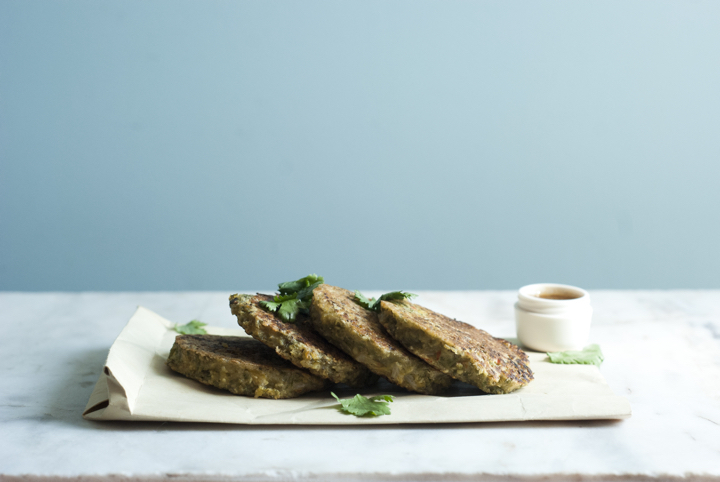 I had some friends coming over for dinner last weekend to taste some of my fermentation experiments. Amongst kimchi, sauerkraut (which will be covered soon), a sour coconut chutney and other little things, these mung bean pancakes were served. They’re not fermented per se, but do call for the use of kimchi, one of my favourite live foods.
I had some friends coming over for dinner last weekend to taste some of my fermentation experiments. Amongst kimchi, sauerkraut (which will be covered soon), a sour coconut chutney and other little things, these mung bean pancakes were served. They’re not fermented per se, but do call for the use of kimchi, one of my favourite live foods.
I looked up online for several bindaetteok recipes and they all used the same basic ingredients – dried mung beans, sesame oil, rice and water. The amount of rice called for in those recipes was so little that I actually decided to omit it altogether. I also realised that the mung beans they use in Korea to make these pancakes are peeled and split, whereas the ones I find in the stores are sold whole. Needless to say, I used them whole and had not issues at all. I assume the batter is probably coarser than if I had used split beans, but I do like the extra texture.
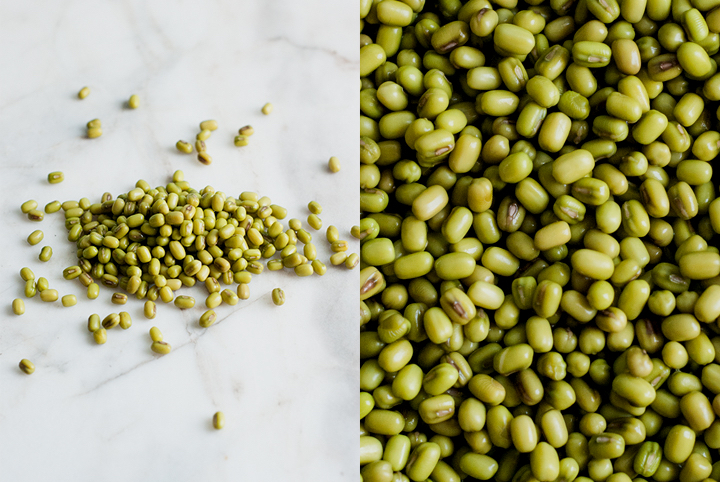
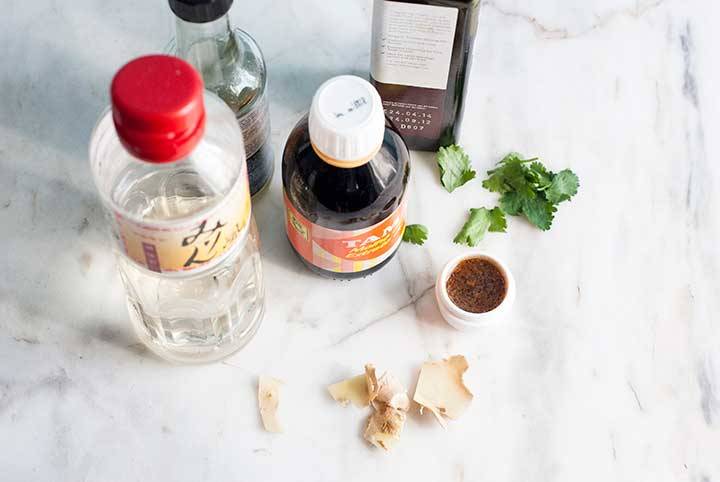 Kimchi is hard to find in Portugal and even though I prefer these pancakes with it – because of the tangy and sharp flavours it gives to the batter – it’s possible to use finely chopped spring onions instead. Just bear in mind kimchi is the ingredient that gives them character, so a kimchi-free version of the pancakes won’t certainly taste as authentic. Having said this, I highly encourage you to make your own (recipe here!) – it’s quite easy and, if you haven’t tasted if before, you’ll be in for a wonderful taste experience that’s unusual for the western palate.
Kimchi is hard to find in Portugal and even though I prefer these pancakes with it – because of the tangy and sharp flavours it gives to the batter – it’s possible to use finely chopped spring onions instead. Just bear in mind kimchi is the ingredient that gives them character, so a kimchi-free version of the pancakes won’t certainly taste as authentic. Having said this, I highly encourage you to make your own (recipe here!) – it’s quite easy and, if you haven’t tasted if before, you’ll be in for a wonderful taste experience that’s unusual for the western palate.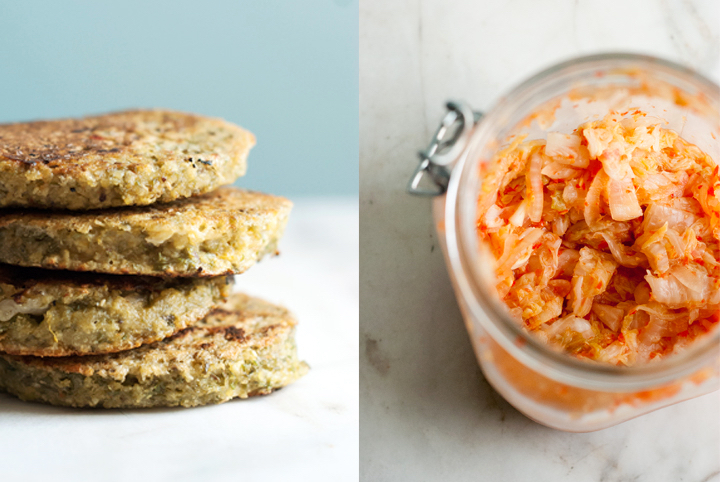
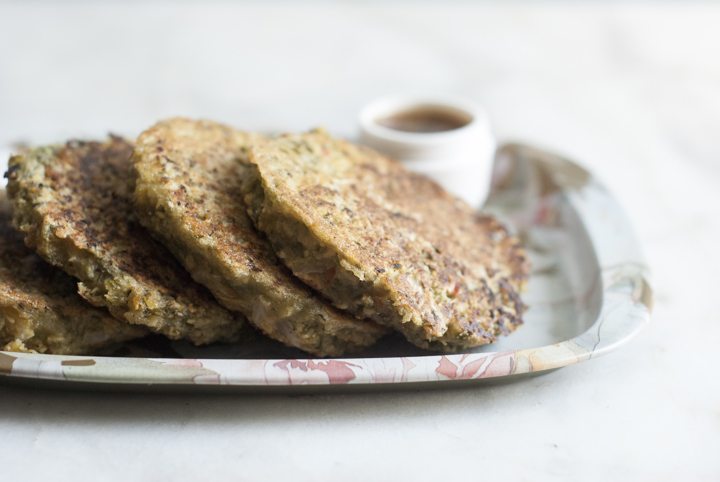
Bindaetteok (Korean Mung Bean Pancakes) with Sesame-Ginger Sauce
(makes 8-10 pancakes)
for the pancakes:
190 g / 1 cup mung beans, soaked overnight
1 teaspoon toasted sesame oil
1 teaspoon tamari sauce
½ teaspoon salt
60 ml / ¼ cup kimchi juice
60 ml / ¼ cup water
90 g / ½ cup kimchi
vegetable oil for shallow frying
for the sesame-ginger dipping sauce:
20 g fresh ginger
1 teaspoon toasted sesame oil
2 tablespoons tamari sauce
1 small garlic clove minced
1 tablespoon mirin
2 tablespoons water
1 tablespoon rice vinegar
Drain and rinse the beans. Add them to the bowl of a food processor along with the other pancake ingredients, except the kimchi. Process until a thick batter comes together – don’t worry if it doesn’t get perfectly smooth; it’s okay if it’s only coarsely pureed.
Heat a large skillet over medium high heat and add 1 to 2 tablespoons of oil, tilting the pan to ensure the oil is evenly distributed. When the oil is hot, but not smoking, drop 2 tablespoons of the batter at a time. Cook the pancakes for 2-3 minutes on each side or until golden brown.
For the sesame ginger sauce, peel and grate the ginger. Squeeze the ginger over a bowl to extract its juices and discard the pulp. Add the remaining sauce ingredients to the bowl and whisk everything together.
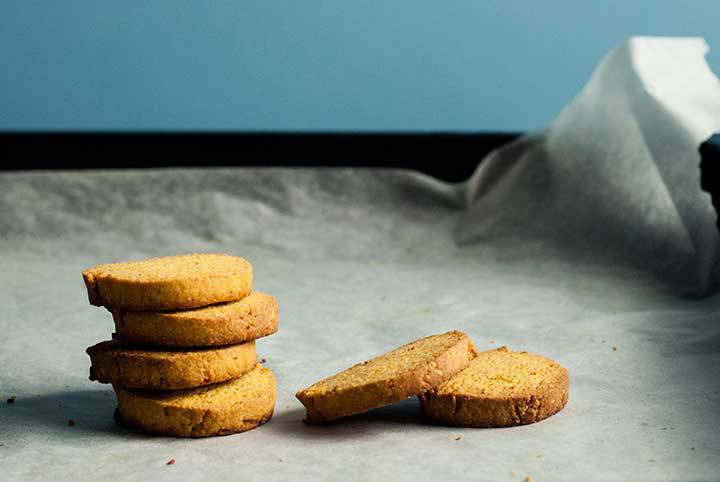

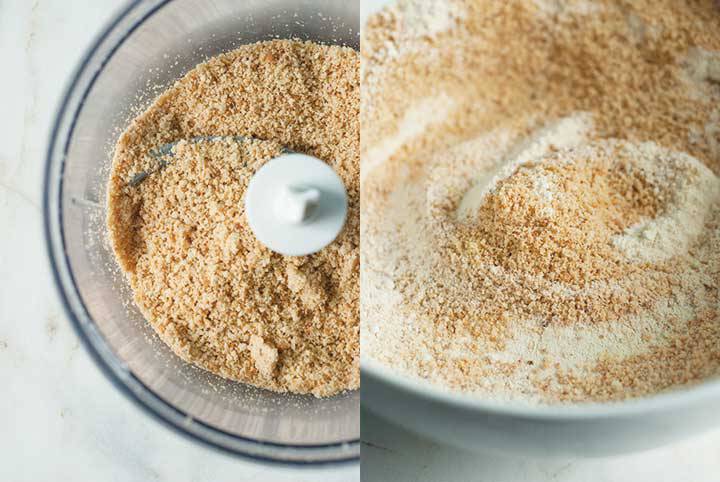


6 comments